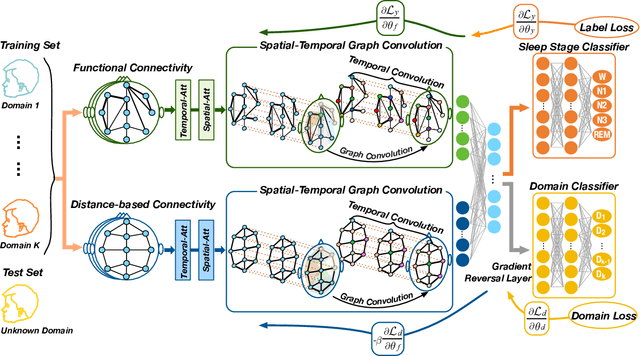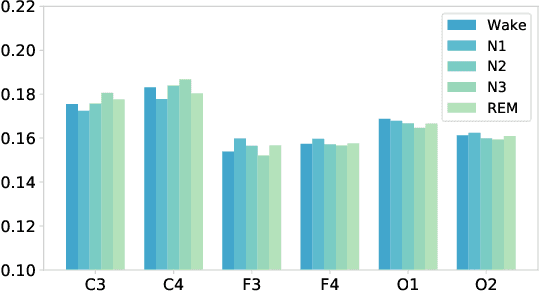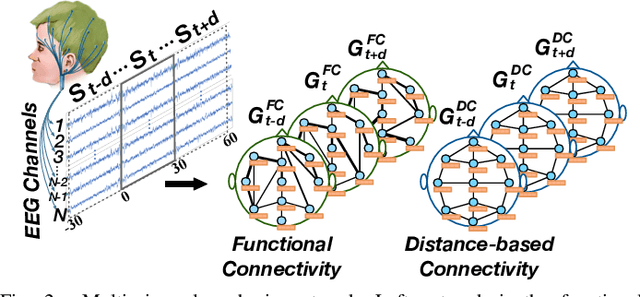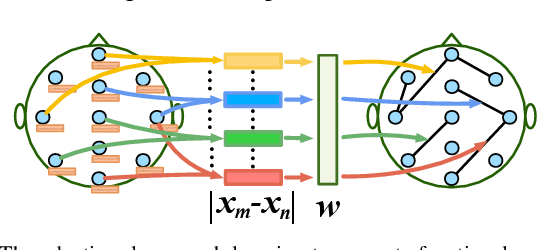Xiaojun Ning
Multi-View Spatial-Temporal Graph Convolutional Networks with Domain Generalization for Sleep Stage Classification
Sep 04, 2021



Abstract:Sleep stage classification is essential for sleep assessment and disease diagnosis. Although previous attempts to classify sleep stages have achieved high classification performance, several challenges remain open: 1) How to effectively utilize time-varying spatial and temporal features from multi-channel brain signals remains challenging. Prior works have not been able to fully utilize the spatial topological information among brain regions. 2) Due to the many differences found in individual biological signals, how to overcome the differences of subjects and improve the generalization of deep neural networks is important. 3) Most deep learning methods ignore the interpretability of the model to the brain. To address the above challenges, we propose a multi-view spatial-temporal graph convolutional networks (MSTGCN) with domain generalization for sleep stage classification. Specifically, we construct two brain view graphs for MSTGCN based on the functional connectivity and physical distance proximity of the brain regions. The MSTGCN consists of graph convolutions for extracting spatial features and temporal convolutions for capturing the transition rules among sleep stages. In addition, attention mechanism is employed for capturing the most relevant spatial-temporal information for sleep stage classification. Finally, domain generalization and MSTGCN are integrated into a unified framework to extract subject-invariant sleep features. Experiments on two public datasets demonstrate that the proposed model outperforms the state-of-the-art baselines.
 Add to Chrome
Add to Chrome Add to Firefox
Add to Firefox Add to Edge
Add to Edge